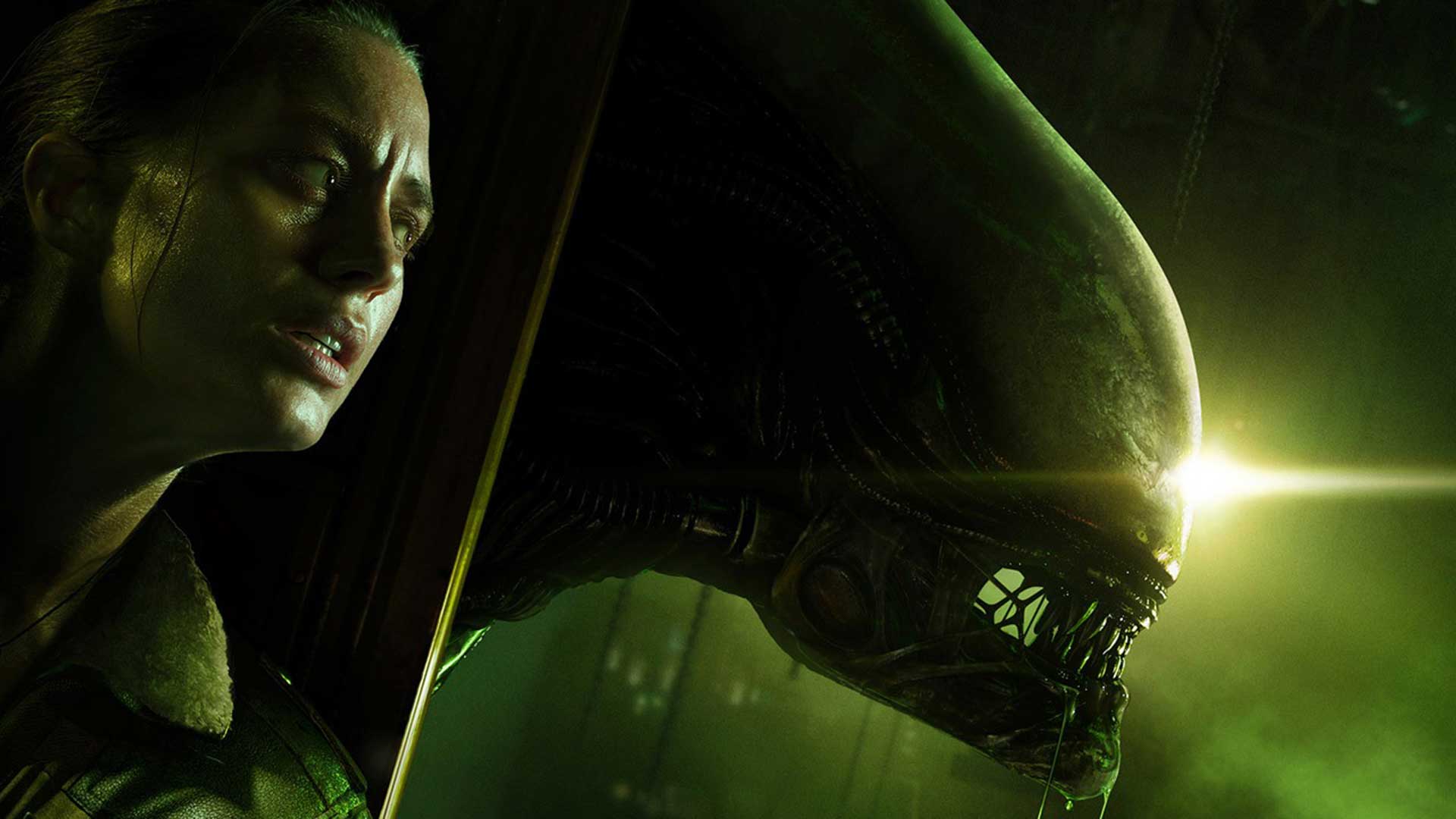Alien Isolation: An Exhibition of Unforgiving Terror
An abandoned space station full of murderous androids and flesh-eating aliens (or: a luxurious getaway for the whole family!)

In space no one can hear you scream…no one except for my neighbours, hearing me squeal and whimper as I trudge through Sevastopol Station, again and again, year after year. Picture me sitting in a pitch-black room at 3 AM, the sudden chill of a fan blowing past me, going through the same halls and vents that I’ve been through countless times before. No matter how many times I replay Alien: Isolation, it never ceases to capture the horror fanatic within me.
If you haven’t watched Ridley Scott’s 1979 Horror masterpiece, Alien, go away and watch it. Alien was groundbreaking at the time for practically everything it did. From the haunting, ominous music to the creature design inspired by H.R. Giger’s disturbingly grotesque artwork, it defined Sci-Fi Horror as we know it today. Unfortunately, it spawned a questionable franchise, and it led to 2013’s absolute train-wreck of a video game adaptation, Aliens: Colonial Marines.

Led by Gearbox Software’s controversial and insufferable Randy Pitchford, Colonial Marines was the perfect example of how not to make or advertise a game. With years of development hell, fans waited patiently until it was prematurely dumped in front of them. What was supposed to be a faithful adaptation of Aliens’ atmosphere and style had turned into a generic shooter that even managed to make Call of Duty look unique.
Somewhere beneath the surface, however, shut away from all the controversy and disappointment, a talented team known as Creative Assembly slowly began to build what would become known as Alien: Isolation. In January 2014, they announced the game along with a teaser, hinting towards the game being a much slower, more intimate survival horror experience set within an abandoned space station. There was a tiny glimmer of hope that shined from its reveal and in October of that same year, it was released.

Alien: Isolation is one of those rare few experiences that I wish I could go back through for the first time, blind to every horror that would be creeping around the next corner of Isolation’s incredibly dark and sinister setting of Sevastopol Station. The first 10 minutes of the game tells you everything you need to know. As an Alien fan, watching the first hallway I stepped into flicker with light, with that subtle but beautifully crafted score play in the background, I knew I was in for a treat. I could have stopped playing right there as it had already surpassed Colonial Marines in terms of being faithful to the franchise. It genuinely felt like I was walking through a set from the original film, showcasing a development team full of die-hard Alien fans who worked tirelessly to show that there was still hope left within the series.
The first few hours of Alien: Isolation proved to be a fun tour, filled with a few cute visual scares and murderous androids, but I couldn’t help but notice that the game was lacking its most essential weapon, the alien itself. One thing that I learned to love about Alien: Isolation, is that it takes its time to set up the story and characters before firing on all of it’s horrifically gory and intense cylinders. By the time you run into the Xenomorph, you’ve already got a grip on the situation aboard the station and the tools that you have equipped, such as the motion tracker that sounds that recognisable “blip” noise whenever an enemy is nearby. However, once you encounter the Xenomorph, everything and anything that you thought you knew is thrown far out of the window, leaving you cowering in fear as it creeps by.

The second encounter of the Xenomorph is incredibly intense. The way it hisses and drools as it slowly claws it’s slender, disfigured limbs out of a vent before dropping onto the floor, slowly rising as it begins to stomp around, scraping its tail along the floor throughout the dimly lit halls of the Infirmary. Sounds pretty intense if you ask me. If there’s one thing to admire about Alien: Isolation, it’s the alien itself, which makes sense considering that it’s the main antagonist of the franchise. The way the developers designed the alien, however, not just in terms of its appearance but it’s AI as well, is what makes Alien: Isolation an incredibly unique experience.
There are many survival horror games out there that either use scripted scares that never change between play-throughs or slightly scripted enemies that will repeat their routines of walking around a level trying to find the player. Never have I encountered an antagonist in a game that feels so unnervingly unpredictable and real as the Xenomorph. Games such as Outlast leave the player with no choice but to simply hide from enemies as it doesn’t give them a chance to fight back, but when you think about it, the lack of combat in these games doesn’t make sense. What’s stopping our protagonist from just picking up a pipe or a knife and fighting back against their human-shaped foes? I’ll tell you what does stop you, a ten-foot-tall walking monstrosity capable of piercing your skull with its tongue. Ew.

That’s what I adore about Alien: Isolation. It doesn’t need to justify why you can’t kill the alien as just looking at it will make you realise it’s unstoppable. Sure it gives you tools such as flares to get rid of it but the horror comes from the fact that at some point, it WILL come back. You can’t reason with it and you can’t kill it, you can only hope that you’ve still got just a little more fuel left in that flamethrower of yours to scare it away for a brief period of time.
It’s relentless and exhausting, constantly checking your motion tracker as it beeps away, one second showing nothing when suddenly a blip appears right next to you. The sound design is chillingly beautiful, hearing the hiss and snarl of the alien as it crawls through the vents of the station or the distant cries of a helpless survivor as it catches its next victim. There’s a section late in the game where I started to hold my breath whenever the alien was near. For anyone who hasn’t played it, this probably all seems very dramatic but trust me, it’s a paralysing experience of fear and dread.

The AI of the alien is incredibly fascinating to me as it’s impossible to cheat against. In most games, it doesn’t take much to find flaws in the AI no matter how well masked they may be. Alien: Isolation breaks almost every traditional rule imaginable with its AI, giving the alien the ability to play dirty. It’s one goal is to kill you and everyone else aboard Sevastopol and it doesn’t care about how unfair it can make your experience feel. It’s relentless, unforgiving and brutal. You can’t outrun it, you can’t kill it and you certainly can’t outsmart it. It calls back to the original Alien film, where the alien had an incredibly intimidating presence even when it wasn’t on-screen.
Alien: Isolation is an incredible feat not just for the survival horror genre but for the gaming industry as a whole. It’s disappointing sales led to its cliffhanger ending to never be resolved with a sequel although the idea of a second game has never been shot down. Even if it never gets the sequel it rightfully deserves, I hope more titles within the genre use Alien: Isolation’s themes and ideas to create another unforgettable experience. It’s an incredibly exciting time to be a survival horror fan, with a new Resident Evil just a few months away and rising rumours of a Silent Hill reboot, although as exciting as it is to look towards the future, we should take a step back and realise what makes the genre so impressive. I believe that Alien: Isolation is a vital part of the genre and should be remembered and acknowledged as one of the many greats within the industry.
